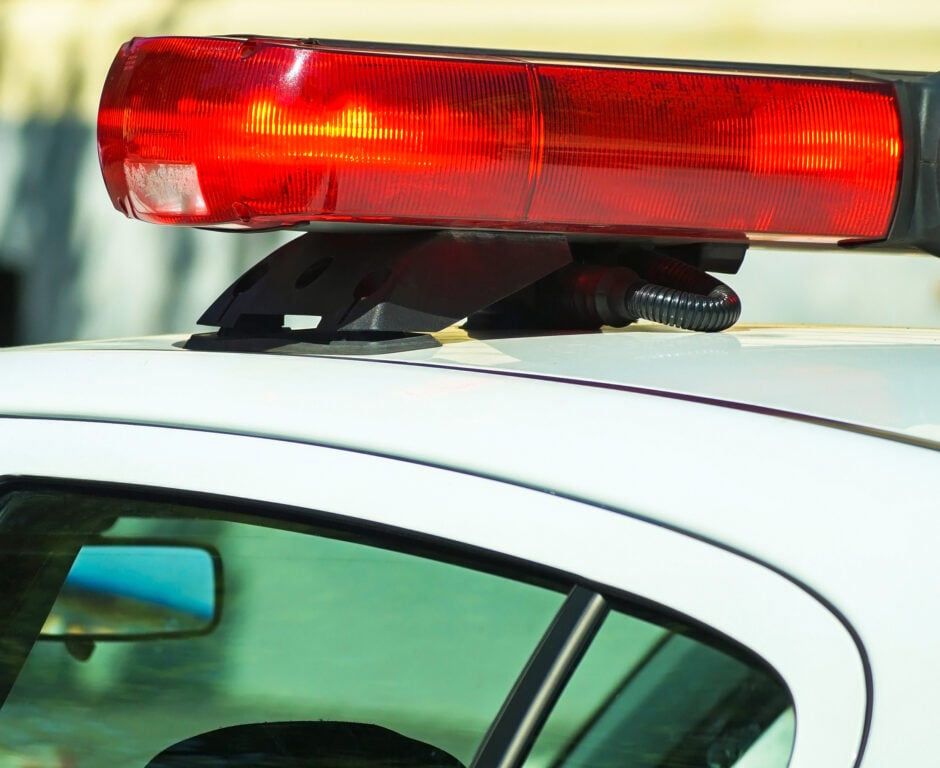NORTH SIOUX CITY, S.D. (AP) — A railroad bridge collapsed during flooding in the Midwestern U.S. that has led to water rescues, evacuations and at least one death and has brought additional misery during a vast and stubborn heat wave.
The bridge connecting North Sioux City, South Dakota, with Sioux City, Iowa, collapsed into the Big Sioux River late Sunday, an emergency manager said. Images from local media showed a large span of the steel bridge partially underwater as floodwaters rushed over it.
Some of the trusses collapsed, Jason Westcott, an emergency manager in Union County, South Dakota, told KCAU-TV.
There were no reports of injuries from the collapse, which occurred around 11 p.m. The bridge’s owner, BNSF Railway, had stopped operating it as a precaution during the flooding, spokesperson Kendall Sloan said. Trains are being rerouted.
Floodwaters have risen over days of heavy rain in South Dakota, Iowa, Minnesota and Nebraska. More rain is forecast, and many streams may not crest until later this week as the floodwaters slowly drain to the Missouri and Mississippi rivers.
Deb Kempema lost her home decor store, First Impressions, after a river levee broke in northwestern Iowa’s Rock Valley, forced evacuations and destroyed shops.
It was “7,000 square feet of very pretty, pretty things. And it’s all gone,” she told KELO-TV. “But I like to reinvent myself, so we’re going to come back better.”
The Big Sioux River stabilized Monday morning at around 45 feet, over 7 feet higher than the previous record, Sioux City Fire Marshal Mark Aesoph said. Evacuations have begun for homes at low elevations, and more are expected as waters rise.
“It’s just been difficult to predict what’s going to happen when levels are this high when we have no history with it,” he said.
Thirteen rivers flooded in that part of Iowa, said Eric Tigges of Clay County emergency management. Entire neighborhoods, and at least one whole town, were evacuated, and the Iowa town of Spencer imposed a curfew Sunday for a second night after flooding that surpassed a record set in 1953.
“When the flood gauge is underwater, it’s really high,” Tigges said at a news conference.
Gov. Kim Reynolds declared a disaster for 21 counties in northern Iowa, including Sioux County. In drone video posted by the sheriff, no streets were visible, just roofs and treetops poking above the water.
National Guard troops helped with water rescues and carted needed medications lost in flooding.
“Businesses are shuttered. Main streets have been impacted,” Reynolds said. “Hospitals, nursing homes and other care facilities were evacuated. Cities are without power, and some are without drinkable water.”
Emergency management officials in the small South Dakota community of Dakota Dunes urged evacuations Sunday for roughly 4,000 residents. Dakota Dunes is near the Nebraska and Iowa borders and is sandwiched between the Missouri and Big Sioux rivers.
Emergency management officials there warned residents that a mandatory evacuation could come quickly if flood barriers are breached.
South Dakota Gov. Kristi Noem declared an emergency after severe flooding in the southeastern part of her state. Several highways were closed. At least one person died, Noem said Sunday, without providing details.
Areas south of Sioux Falls, the state’s largest city, had an estimated 10 to 15 inches (25 to 38 centimeters) of rain over three days, weather service hydrologist Kevin Low said.
Parts of Nebraska, South Dakota, Minnesota and Iowa received eight times the typical average rainfall, said National Weather Service meteorologist Donna Dubberke.
Minor to moderate flooding was expected along the Missouri River, according to officials with the U.S. Army Corps of Engineers.
Elsewhere, the heat remained the biggest worry, even as temperatures moderated at the start of the week in the Northeast and some other parts of the U.S. that have sweltered for days.
Public officials cautioned residents about the dangers of excessive heat and humidity. Forecasters said the heat wave will continue early in the week in the Southeast, portions of the South and the Plains.
Washington, D.C., Baltimore and Philadelphia all saw record heat on over the weekend.
Last year the U.S. experienced the most heat waves since 1936, experts said. An AP analysis of data from the Centers for Disease Control and Prevention found that excessive heat contributed to more than 2,300 deaths, the highest in 45 years of records.
